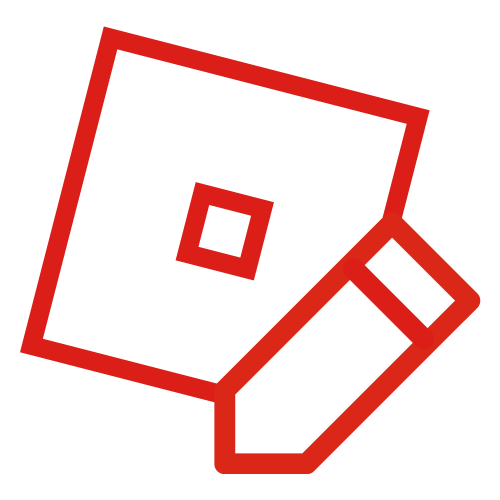
A screenshot showing off the Legacy Terrain.
The Terrain object is a feature of ROBLOX which was introduced in 2011. In May 2015, smooth terrain was introduced and new worlds created will use that type of terrain.
Smooth terrain
Smooth terrain is an update to terrain in 2015. It is a type of terrain that has a realistic feel to it, but it isn't blocky, unlike legacy terrain.
Legacy Terrain
Legacy Terrain, usually referred to as just Terrain, is the terrain object when the smooth Terrain feature is disabled. The Terrain object allows for a player to build landscapes without using Parts. The Terrain is made up of many individual cells including ramps, cubes, and corner ramps. When the cells are filled in the terrain automatically determines what faces are showing and then creates the terrain mesh based off the cells.
As it is based off the BasePart class most properties the Terrain object inherits are not modifiable. An explosion will remove the cells in its blast radius if the explosion is set up to do so. This provides a simple way to create craters ingame.
In ROBLOX Studio the Terrain plugin allows you to create craters, mountains, etc, or you could just randomize it using the Terrain Generator script in the plugin. Read more about the terrain generator here.
Features
- Vast voxel-based grid of boxes and wedges.
- Integrated with the ROBLOX physics engine.
- Sand & Grass environments currently available.
- Destructible terrain
- It is fully scriptable in Lua (but API will change before release).
- Editable with ROBLOX and user-made Studio plugins.
- First version out in September.
Terrain Materials (Voxel)

The sixteen different materials of Voxel Terrain.
- Grass
- Sand
- Brick
- Granite
- Asphalt
- Iron Plate
- Aluminum Plate
- Gold
- Wood Planks
- Logs
- Gravel
- Cinderblock
- Mossy Rock
- Concrete
- Red Plastic
- Blue Plastic
- Water
Terrain Materials (Smooth)
- Wood Planks
- Sand
- Grass
- Water
- Granite
- Brick
- Stone
- Cement
Hacks
When the Terrain object was released, people had the ability to hack ROBLOX games, by generating Terrain over the existing place. This makes the place hard to play or even broken because of the terrain that was not supposed to be in the level. The place could also be flooded. There are some scripts that prevent terrain hacks from occurring. However, not all hacks are yet resolved.
The hacks were done by replacing all voxel values (including the empty ones) to any other values that weren't empty.
Criticism
ROBLOX's terrain (left) compared to Minecraft's terrain (right).
Many people thought that the terrain were resembling Minecraft's terrain, however they are not similar in any way. It was also criticized for the amount of lag in places and lack of effort in building bases in places.
History
In an update, more Terrain Voxel textures were introduced, bringing the number up to sixteen.

Water was added to Terrain.
On December 7, 2013, an update was added that increased the size of the Terrain from 512x64x512 to 64000x64000x64000. This allowed players to add Terrain Water to existing places that are very large.
In a later update to ROBLOX, the appearance of Terrain materials was updated to match the Part's material appearance.
On May 31, 2015, a new type of Terrain named Smooth Terrain was added, increasing the graphical fidelity and changing the physics engine from a blocky style to a smoother, more photo-realistic, style.
Also at one point they made water more realistic by reflecting everything.
Deprecation
On January 1, 2017, ROBLOX scheduled to remove Legacy terrain. The forum post on the devforums can be found here. This caused rage throughout the community.








